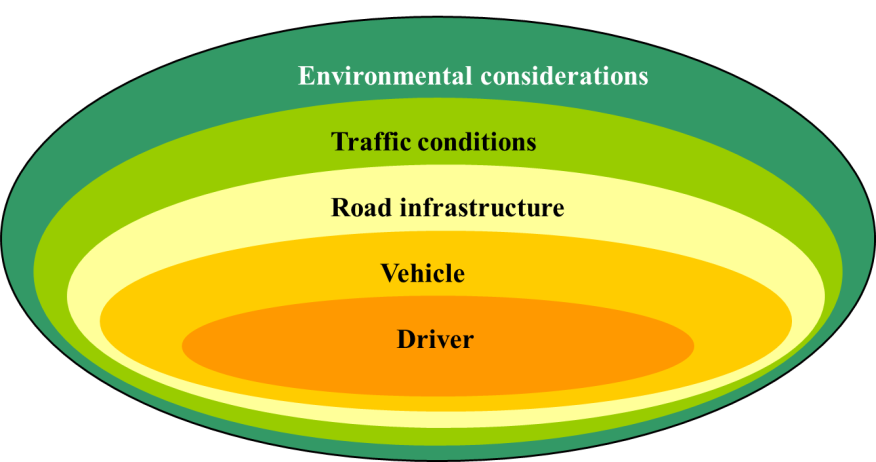
Road Network Operations
& Intelligent Transport Systems
A guide for practitioners!

Road Network Operations
& Intelligent Transport Systems
A guide for practitioners!
The context of use describes the conditions and environment in which users interact with ITS. Examples include:
The context describes the main issues likely to have a bearing on the interaction such as “who” “when” “where” and the environmental conditions.
The context of use is an important consideration when designing how users interact with ITS. It can affect motivation, performance, attitudes and behaviour of the users and the overall efficiency and effectiveness of the interaction. An ITS device should not be described as “usable” or “ergonomic” without also describing the context in which that use takes place.
Any measurements of usability (user-friendliness) should be carried out in an appropriate context and include a detailed description of that context.
Part of the context of use includes the user(s) themselves – who can be characterised in many ways including their knowledge, skills, experience, education, training, physical attributes, motor and sensory capabilities. The user’s experience is the context of events that have immediately preceded this interaction with ITS. (See Diversity of ITS Users)
The user can also be identified in terms of their current mood, time pressure and their goals in interacting with the ITS.
Tasks are the activities undertaken to achieve a goal and are part of the context. Issues here include the frequency and duration of the tasks to be undertaken. (See Human Tasks and Errors)
The technological environment includes the software and hardware of ITS. For example, interacting on a small mobile screen or a full screen are different contexts. The speed of processing and the characteristics of a keyboard can all affect the usability of ITS. The availability of reference material/user guides and other equipment may also be relevant.
For some interactions with ITS, the organisational context may be relevant such as the attitudes of an organisation’s management and employees towards the ITS, the way task performance is monitored and any internal procedures or practices. The structure of the organisation, reporting and reward arrangements, the availability of assistance, and frequency of interruption – are all relevant factors.
Interaction with ITS can be different depending on whether it is an individual or group activity, and whether it is undertaken in public or private. For example, use of an individual ticket machine may involve some social pressure to complete the interaction quickly if there are others waiting to use the facility. Driving is a kind of social activity where there may be both cooperation and competition.
This includes a number of environmental issues:
Another way of representing the various contextual factors is the 5W+H checklist:
Always investigate and document the context of use when designing how users interact with Intelligent Transport Systems as ITS need to be designed for specific contexts.
The following five steps are recommended in specifying the context of use for an ITS (product or service):
Checklists can be helpful in describing the context of use. Diagrams can also be helpful. The example in the figure below concerns a driver’s use of an in-vehicle ITS.

Develop an evaluation plan for the ITS (system or service) and then undertake trials in realistic contexts. Based on feedback and results, re-design the system or service or modify the context of use to achieve the required level of usability.
In the longer term, the Road Operator should set up mechanisms for monitoring ITS use and receiving feedback from users. (See Measuring Performance and Evaluation)
Particular attention should be given to safety-critical tasks. The Road Operator may wish to consider imposing restrictions on interactions in some contexts of use where there is particular risk. Examples might relate to health and safety considerations such as: